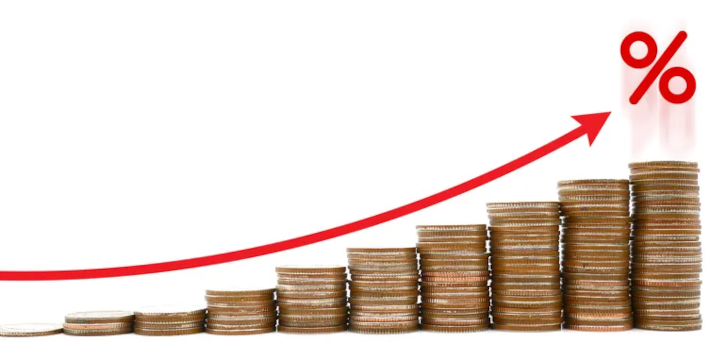After getting a bonus at work, is it better to invest it all at once or split it up into monthly contributions? Does it matter?
The way I see this situation there are two main things to consider: the effect contributions have on your investments, and the effect contributions have on your savings. Let’s look at your investments first.
From the point of view of maximizing your return on investment, in most situations it makes sense to make one large payment into your investments right away rather than spread payments out over time. When the market is level or growing, investing early in bulk is better than spreading out investments over time. Let’s look at a simple example to show why this is the case.
Investing
Imagine you want to invest $10,000 into an account which will return about 10% over the span of one year. In other words, if you invest $10,000 on January 1st, by the end of December your account will have made $1,000. Making one bulk contribution of $10,000 results in a profit of around $1,000 by the end of the year. You’d have made $500 in the first half of the year and another $500 in the second half.
Actually, it’ll be a little more than this because the interest will compound each month, so you’d make about $83/month at first in January, by July you’d be making about $87/month and you’d make about $525 in the second half of the year. You’d probably finish with a profit of roughly $1,025 or about $2.80/day on average.
Now, what happens if we split the $10,000 into monthly payments of $833 each? Assuming you still make 10% on your investment, after the first month you’d have earned about $7, by the end of February you’d have made another $14 (or $21 total). By the end of June you’d have made about $147. You’re about $350 worse off by the middle of the year using monthly deposits. By the end of December your scheduled payments would have resulted in you earning $546, or about $1.49/day. About half what you would have earned by making a lump deposit at the beginning of the year.
You’ve spent the same amount of money and earned the same amount of interest in both scenarios, but in the first approach with a lump deposit you made $1,025 and in the scheduled payment approach you made $546.
Now, this approach assumes a few things. The first is that the market is holding steady or going up. In some years the market can drop. If you happen to deposit all of your money right before the market drops and it doesn’t recover by the end of the year then you’d be worse off than if you scheduled monthly payments. In other words, if the market was dropping 10% instead of growing 10%, then you’d be down $1,025 instead of $546. However, it is rare the market takes a nosedive like this and stays down for a year or more at a time. On average, the stock market gradually climbs and so the lump sum approach typically yields better results.
Savings
Earlier I mentioned another way of looking at the situation which focuses on your savings. When you’re putting money into investments, you’re also taking money out of your savings. Basically, you’re buying investments. If you dump a lump sum of money into investments, then it’s not sitting in your savings account, easily accessible in case you need it for something else, like buying a car or dealing with an emergency.
With this in mind, I recommend making sure your savings account has a bit of a cushion in it – an emergency fund that will help you get through any problems that come along. Typically people recommend having about three month’s worth of spending in your savings account if possible. In other words, if you spend $4,000 per month on average, try to keep $12,000 in a savings account for a rainy day.
Assuming you already have that money saved away, then it’s usually best to put all your bonus into investments immediately. However, if your savings account doesn’t have that buffer of three months or more spending money, then it is worth “topping it up” using your bonus. And then putting any extra money after that into investments. This might delay your investments or cause you to schedule smaller investment contributions, but it’ll help you maintain that buffer of savings to protect yourself from emergencies.

Comments are closed, but trackbacks and pingbacks are open.